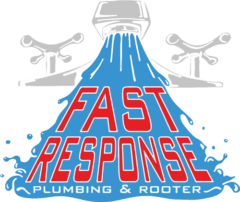Understanding Low-Flow Toilets
Upgrading to a low-flow toilet can save water and reduce utility bills. By learning about different types and standards, we can choose the best option for our homes.
Types and Technologies
Low-flow toilets use innovative mechanisms to save water while maintaining performance. Gravity-fed toilets rely on natural gravitational pull for flushing. This simple system is cost-effective and efficient.
Pressure-assisted toilets use air pressure to enhance flushing. They are powerful and reduce the chance of clogs, but are often noisier than other types.
Dual-flush toilets offer two flush options: a low-volume flush for liquid waste and a higher volume for solid waste. By using these, we can greatly reduce water use without sacrificing performance.
EPA WaterSense Standards
When we look for a low-flow toilet, checking for the EPA WaterSense label is crucial. This certification guarantees the toilet uses no more than 1.28 gallons per flush, 20% less than regular models.
WaterSense toilets must pass rigorous testing for both water savings and performance. Choosing a WaterSense-labeled toilet ensures we are getting a product that is efficient and reliable, helping us conserve resources effectively.
Environmental and Financial Benefits
Upgrading to a low-flow toilet can help us save money and protect the environment. We can reduce our water usage, leading to lower utility bills and a more sustainable lifestyle.
Water Conservation and Usage Reduction
Low-flow toilets use less water per flush compared to traditional models. This reduction in water consumption is significant. By using less water, we contribute to water conservation efforts and help reduce the strain on our local water resources. For areas facing drought conditions, this can make a big difference in preserving precious water supplies.
Water savings not only benefit the environment but also align with an eco-friendly lifestyle. By investing in a low-flow toilet, we promote sustainable habits in our households. It’s essential for us to consider the long-term environmental impact and the positive changes we can make by choosing water-efficient products. These choices support our commitment to protecting our planet.
Cost Efficiency and Savings
Switching to low-flow toilets translates to cost savings on our water bills. With reduced water usage, our utility expenses decrease, helping us save money over time. Many regions offer rebates for installing eco-friendly toilets, which makes this an even more affordable investment. These rebates can further enhance the financial benefits of upgrading.
Our initial investments in low-flow toilets may seem significant, but the long-term cost benefits outweigh these initial expenses. By saving on water bills and taking advantage of rebates, we experience financial gains. Opting for low-flow toilets not only helps our wallets but also aligns with our goal of living a sustainable lifestyle.
Installation, Maintenance, and Incentives

Upgrading to a low-flow toilet can save us water and money. We’ll examine how to choose the right model, how to maintain it, and the incentives available for making the switch.
Choosing the Right Model
When selecting a low-flow toilet, we need to consider the type, such as dual-flush or composting toilets. Dual-flush models let us choose between a small flush for liquids and a larger one for solids, saving more water. Composting toilets use little or no water and turn waste into compost, perfect for eco-friendly homes.
We should also look for models with the WaterSense label. This label means the toilet meets water efficiency and performance standards, helping us use less water without sacrificing quality. Let’s also consider the size and shape of the toilet to ensure it fits our bathroom space.
Professional toilet installation is recommended for the best performance. A good installer will ensure all parts are working correctly and provide guidance on usage.
Maintaining Your Low-Flow Toilet
Maintaining our low-flow toilet is straightforward. Regular cleaning with non-abrasive cleaners helps keep it in top condition. Avoid using chemical drain cleaners that could damage the components. We should check the toilet for leaks periodically; a simple test involves adding food coloring to the tank and checking if it seeps into the bowl.
For dual-flush models, ensure the buttons or levers function correctly. Composting toilets may require more frequent maintenance, like emptying the compost bin and checking ventilation systems.
Maintenance ensures the toilet runs efficiently and prevents costly repairs. Keeping manuals handy can help us troubleshoot common issues quickly and easily.
Incentives for Upgrading
Many incentives are available to encourage us to upgrade to low-flow toilets. We might find tax incentives at the state or federal level. Some local governments offer rebates when we purchase WaterSense-labeled toilets.
In some regions, utilities provide discounts or vouchers to help lower upfront costs. We can check with our utility company or local authorities for available programs.
Using less water decreases our utility bills, providing long-term savings. Together, these incentives help make the upgrade affordable and rewarding.
